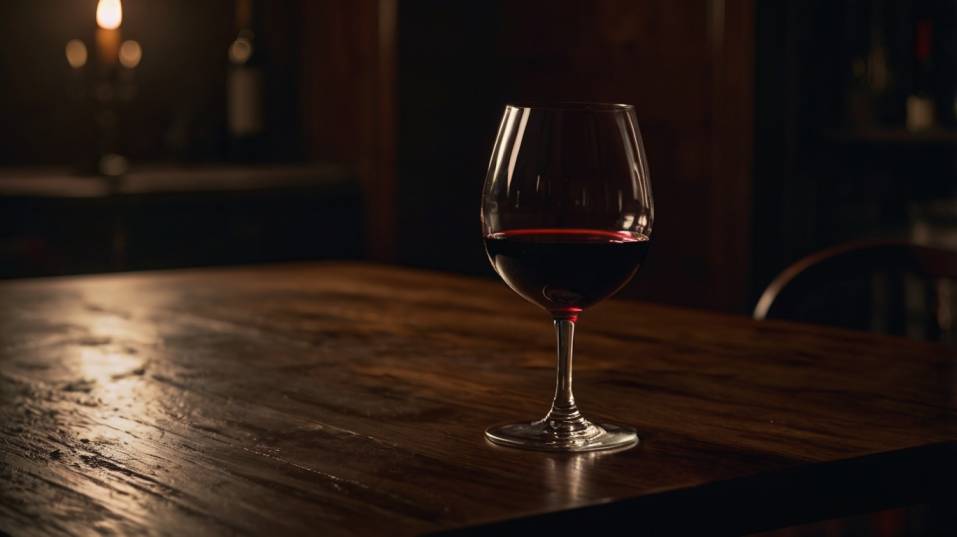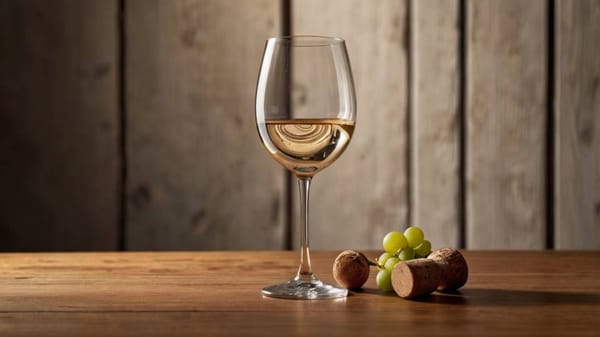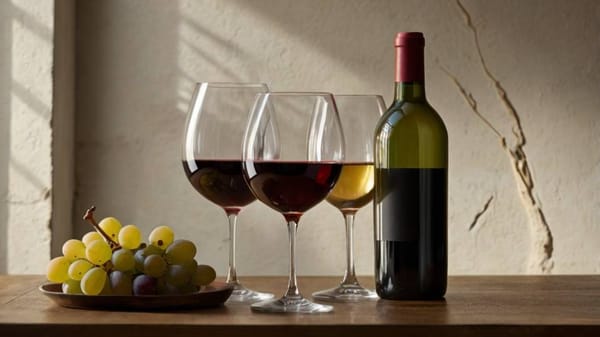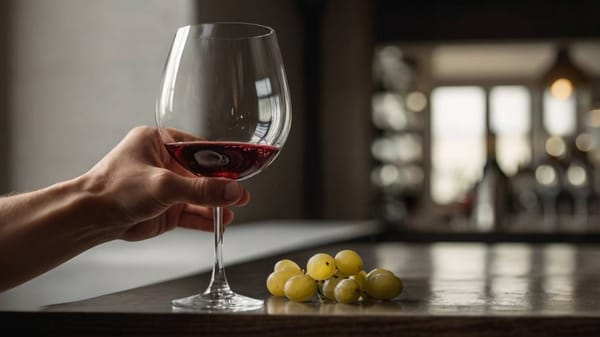Why Wine Gets Better With Air (Sometimes)
Want to know why air can make your wine taste better? Learn how to swirl, decant, and taste with intention to elevate every glass.

Ever wonder why some wines seem to come alive after a few minutes in the glass? If you're new to wine, watching someone swirl or decant can feel like a ritual you haven’t been taught.
But there’s real transformation happening—not magic, not myth. Learning how and when to let wine breathe can turn an ordinary sip into something extraordinary.
Here’s what actually happens when wine meets air—and how to use that moment to your advantage.
What Actually Happens When Wine Meets Air?
Oxygen is both a friend and a threat to wine. In the short term, a controlled exposure to air can help a wine express itself more fully.
It can smooth rough tannins, soften sharp acidity, and lift hidden aromas. That’s what we mean when we say a wine “opens up.”
Here’s the chemistry: when wine is exposed to oxygen, some of its volatile compounds evaporate—alcohol, sulfur compounds, reductive elements.
Others begin to interact with oxygen and evolve. Aromas become more pronounced. Textures round out. Wines that started tight or closed can become more generous, complex, and enjoyable.
But this window is temporary. Leave a wine exposed too long, and oxidation sets in. Fruit flavors flatten. Aromas dull. The vibrancy disappears. So the goal is balance—giving a wine just enough air to open up without losing its edge.

When Air Improves a Wine—and Why That Matters to You
Young red wines often benefit the most from air. Especially those with firm tannins or bold structure—Cabernet Sauvignon, Syrah, Nebbiolo, Malbec.
These wines are made to age, but that doesn’t mean you have to wait ten years to enjoy them. A bit of air can act as a fast-forward button, softening astringency and teasing out more aromatic nuance.
If a red feels angular, muted, or overly grippy right out of the bottle, give it air. Swirl it, let it sit in your glass, or decant it for twenty minutes.
Watch what happens. What once tasted tight and harsh can turn plush, with fruit, spice, and earth emerging in layers.
Some young whites also benefit from air—particularly structured or oak-aged varieties like white Burgundy, Alsatian Riesling, or serious Chardonnay.
At first, these wines can seem restrained, even shy. Air helps release their more subtle textures and aromas, revealing complexity you’d otherwise miss.
But not every wine improves with air. Delicate, older bottles are especially vulnerable. A 15-year-old Pinot Noir or aged Barolo might fall apart quickly once opened. The aromas, so fragile and fleeting, can disappear in minutes.
In these cases, your best move is to pour gently, avoid decanting, and taste attentively from the start. Air isn’t always the solution—it’s a tool. One that works best when used with intention.
How to Use Air the Right Way
Swirling
Swirling is your everyday tool. It brings wine into contact with air without overwhelming it. When you swirl, you increase the surface area of the wine and introduce oxygen, helping release aromatic compounds.
You’ll often notice a wine smell different—more open, more expressive—after a few good swirls.
Decanting
Decanting is a bigger move. It’s especially useful for young wines with structure or sediment. A wide-based decanter exposes more wine to air at once, encouraging faster development.
Ten to thirty minutes in a decanter can transform the drinking experience—especially with reds that feel tight, tannic, or shy out of the bottle.
Letting Wine Sit in the Glass
Letting wine sit in the glass is the simplest method. Even without swirling or decanting, a few minutes of rest can reveal shifts in aroma and taste.
Try this: pour a glass, don’t touch it, and taste it again after ten minutes. Then compare with a freshly poured one. You’ll start to see what air can do.
Developing Your Palate: What to Look (and Taste) For
Pay attention to the first few seconds after pouring. Does the wine seem closed, sharp, or disjointed? Does it smell faint, or like rubbing alcohol? These can be signs that the wine needs air.
After some exposure, you might notice the texture soften. Fruit aromas become clearer. Secondary notes—herbs, minerals, floral tones—might emerge.
The wine may feel more “together,” more balanced. These are all cues that air is helping the wine show you what it’s really about.
On the other hand, if a wine starts bright but quickly loses focus, becomes flat or oxidized, you’ve likely passed the peak. That’s not failure—it’s experience. Learning how wines react over time sharpens your palate and builds confidence.
Real-World Examples to Practice With
- Young Bordeaux or Napa Cabernet: Decant for 30–60 minutes. You’ll notice sharper tannins smooth out, and dense fruit notes become more accessible.
- A white Burgundy or premium Chardonnay: Swirl and taste over time. You may discover creamy textures, subtle oak, or saline minerality that wasn’t there at first.
- Natural wines or reductive styles: If it smells like matchstick or funk at first, let it sit. Air often clarifies these wines dramatically within 10–15 minutes.
- Older reds (10+ years): Open carefully, avoid aggressive swirling, and drink with focus. These wines are like whispered conversations—easy to miss if you’re not listening.
Final Thoughts
Learning how air affects wine is one of the most practical tools in your tasting toolkit. It helps you experience more of what’s in the glass—and makes each pour a little more rewarding. The trick isn’t memorizing rules.
It’s developing sensitivity. Trust what you taste. Let each wine teach you how it wants to be treated.
Tonight, open a bottle with curiosity. Taste it right after pouring. Swirl. Wait. Taste again. Pay attention to how it changes—and how your perception changes with it.
Whether you’re sipping a $15 red or a serious cellar bottle, the principle is the same: when you give wine the chance to breathe, you’re giving yourself the chance to connect with it more deeply.
That’s not performance—it’s presence. And it’s how good wine becomes unforgettable.




